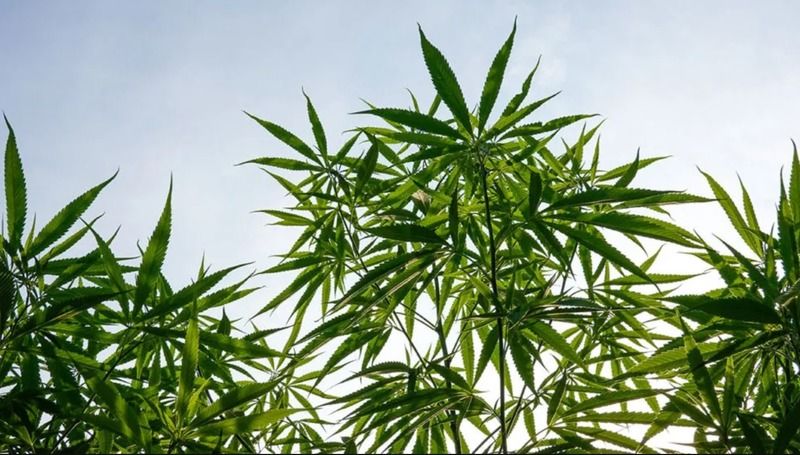Cannabis sativa is a valuable herbaceous plant that has been used in folk medicine and as a source of textile fiber since the dawn of time. This fast-growing plant has recently experienced a resurgence of popularity because of its many uses: it is, after all, a treasure trove of phytochemicals and an excellent source of both cellulosic and woody fibers. Looking to try something new? Check out this.
The pharmaceutical and construction industries are also interested in this plant, since its metabolites have significant bioactivities on human health and its outer and inner stem tissues can be utilized to manufacture bioplastics and concrete-like materials, respectively. In this post, the vast spectrum of hemp phytochemicals is examined in depth, with a focus on compounds of industrial interest such as cannabinoids, terpenes, and phenolic chemicals, as well as their biosynthetic pathways. Cannabinoids are the most researched group of molecules due to their wide range of therapeutic applications in humans, including psychotropic effects. The therapeutic and commercial potential of certain terpenes and phenolic chemicals, in particular stilbenoids and lignans, is emphasized in light of the most recent research findings. Plant genetic engineering and tissue culture are discussed to illustrate the importance of biotechnological techniques for increasing hemp secondary metabolite production and bioactivity. Cell suspension cultures and hairy root cultures are looked at in detail. A section is dedicated to hemp trichomes, in light of their role as phytochemicals. Finally, prospects for the advantages linked to the use of -omics technologies such as metabolomics and transcriptomics to accelerate lead agent identification and large-scale production in bioengineered Cannabis cell culture are outlined.

Introduction
The present climate and economy are pushing us to use sustainable resources to decrease our reliance on petrochemicals while simultaneously minimizing the effect on the environment. Plants are important natural resources since they can produce both phytochemicals and lignocellulosic biomass. Hemp (Cannabis sativa L.), which is a source of fibers, oil, and molecules, is a prominent example of a multi-purpose crop in this review because it contains hemp (Cannabis sativa L.)). We cover topics such as hemp biomass usage, as well as those concerned with its large number of phytochemicals.
Hemp, or cannabis (bio)chemistry and genetic engineering, has been known since ancient times for its medicinal and textile purposes. Hemp is currently experiencing a resurgence because to its rich pharmacological profile, fibers, and agricultural characteristics such as drought tolerance and pests resistance. This demonstrates the wide adaptability of hemp as a fiber crop, which should inspire future research on both cannabis chemistry (bio)and genetic engineering. Hemp crops that produce oil, biomass, or both are now being grown, and the availability of the hemp genome sequence aids molecular research on this crucial crop. Microorganisms are also being developed to create Δ9-tetrahydrocannabinolic acid (THCA) and cannabidiolic acid (CBDA), which is another example of how scientists are interested in utilizing Cannabis pharmacological power.
The aim of this examination is to discuss the potential of hemp for industry and to emphasize its importance in the bio-economy. We (i) describe hemp biomass (i.e., the fibers) usage, (ii) detail hemp chemicals of industrial interest (namely cannabinoids, terpenes, and phenolic compounds), (iii) explain hemp trichomes as pharma-factories, and (iv) evaluate genetic engineering applications, including plant cell suspension and hairy root cultures
Sativa
Cannabis sativa is grown in warmer climates, such as Southeast Asia and Central and South America. The general belief is that it provides a more energizing and creative high, although some people may become anxious. Sativa can also help people suffering from depression, headaches, nausea, or hunger loss. THC content in sativa plants is typically higher than CBD.
Again, it’s crucial to remember that some scientific researchTrusted Source disputes them. Some sativa plants may be energizing, while others may not. The same can be said for indica strains.
Strains and Effects
The table below summarizes the concentrations of THC found in various marijuana strains. These figures come from a research that found no indication that indica and sativa are different.
The variety of effects varies dramatically among strains, and within specific strains. For example, THC levels in Sour Diesel might range from 7.7 percent to 22 percent. The study claims that people shouldn’t use the words “indica” or “sativa” to describe cannabis drugs’ effects. According to the researchers, “A new classification system is required in order for consumers to have a better dialogue with clinicians and healthcare providers about their medical uses of cannabis products.”
Choosing a Strain
Traditionally, determining the answers to the following questions has helped a person find the correct strain of marijuana for them:
- Why are they interested in using marijuana?
- Is it for medical purposes, and if so, what conditions need treatment?
- Is it for recreational purposes, and if so, what kind of experience do they seek?
- How much experience do they have with marijuana?
- How long do they want the experience to last?
However, further study on strains and their effects is now required. nIn an interview with Trusted Source in Cannabis and Cannabinoid Research, Dr. Ethan Russo — a psychopharmacology researcher and neurologist — makes a compelling case against what most people think about the indica vs. sativa debate.
In his article, Dr. Jones implies that researchers cannot and should not categorize cannabis based on its “effects” or chemical composition, as the words “indica” and “sativa” simply indicate the plant’s height, branching, and leaf form.
